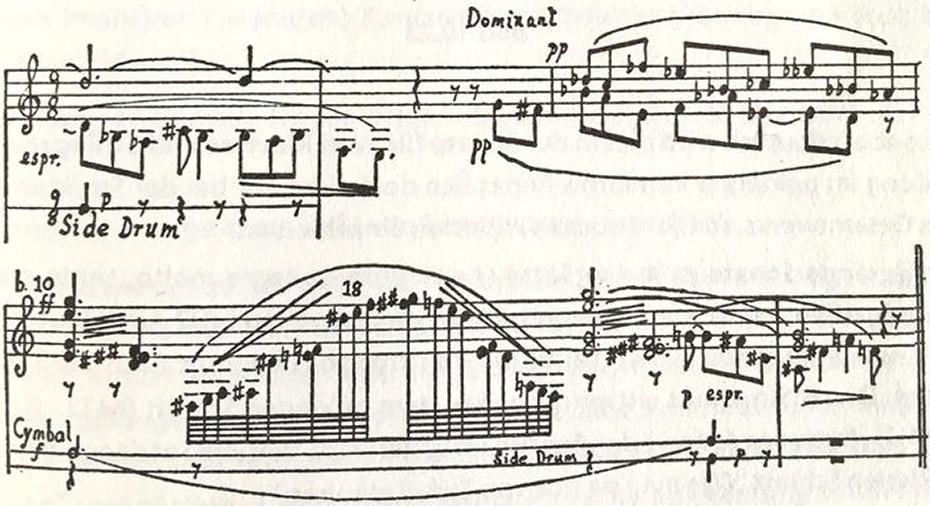Béla Bartók – the golden ratio in music
The golden ratio occurs in music in two forms. On the one hand, two notes or rather their frequencies can relate to each other in the proportion of the golden ratio. On the other hand, the composition of a piece can consist of parts whose lengths can be in the proportion of the golden ratio.
According to musicologist Ernö Lendvai, the golden ratio and Fibonacci numbers recur as a dominant formal principle in the works of the Hungarian composer Béla Bartók (1881–1945). This is particularly significant in the "Sonata for two Pianos and Percussion" (1938), where large and small components are based on the golden ratio as are the melodics and harmonics of the proportions.
But Bartók himself never said anything about his structural composition principles.
